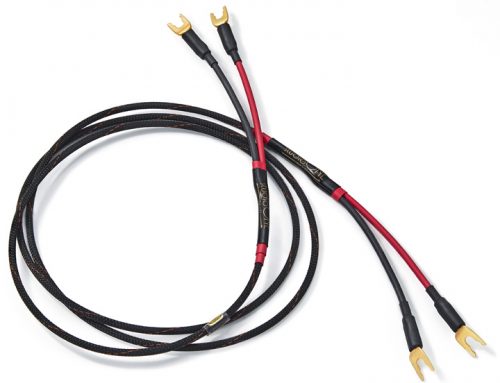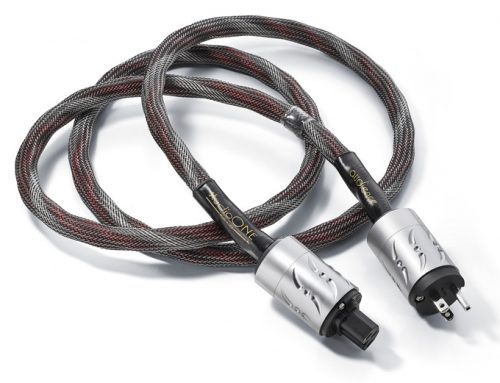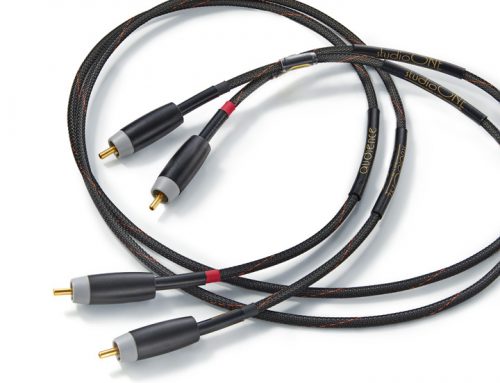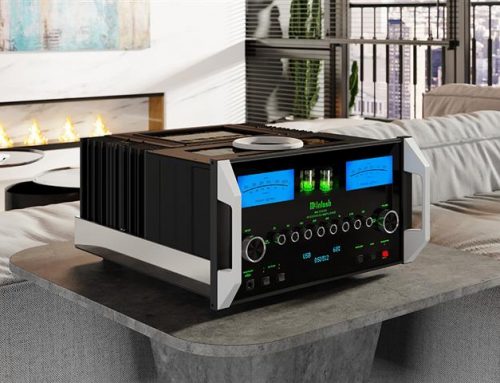One of the albums that I’ve been listening to a lot recently is Eva Cassidy’s Time After Time. Eva has a painfully beautiful voice and it’s such a shame that she was taken away so early. I began by using just a single Akiko Powercord HQ on the Rega Apollo CD transport, comparing the Powercord HQ to the stock OEM 16-guage power cord that came with the component. To those who feel cables don’t make a difference – especially power cords, I have to say, you aren’t listening or your system is greatly lacking transparency. In my case, the benefits of the Akiko Powercord HQ over the OEM powercable were immediately noticeable. The most noticeable improvement with the HQ cord was greater clarity, with more focused, crisper images. Second to this was much improved dynamics – at a macro level on the louder swings but also at the micro level with string plucks and cymbal taps. This improvement in dynamics provided a greater sense of touch, bringing the music to life – giving it a much greater sense of realness. I also noticed that the soundstage itself, with the HQ powercord in play, enlarged, both in breadth as well as depth. And, within the soundstage, all the elements – instruments and singer – were more separated and more anchored to their positions in a more lifelike manner, allowing me to easily concentrate on any piece of the whole. Yet, this wasn’t all the Powercord HQ was able to bring to the listening table. In addition, the piano keys had more tonal colour and weight, bearing more of the instrument’s natural harmonics. Add to all this improved detail rendering, including the reverb of the body of the guitar and of the echo within the recording space. There was no question that on just the Apollo CD transport alone, the Akiko Powercord HQ could significantly outperformed the OEM stock powercable.
Employing both the Powercord HQ cables in my system, I connected one to the preamplifier and the other to my amplifier. Using the cables in this manner provided the greatest lift in performance and also served to benefit all my connected sources – digital and analog. My comparison and evaluation of the Akiko HQ cables was against a set of stock OEM 14-guage cables. My immediate perception was that the HQ cables were able to deliver a very broad number of benefits over the OEM powercords. Listening to the title track on Sade’s Soldier of Love album, I could hear a grainy texture over the cymbals with the OEM cords in place; however, replacing these OEM cords with the Akiko HQ cables resulted in greater clarity and delicacy of the cymbals, with grain and coarseness now well in-check. There was also a substantial expansion in soundstage size with the HQ cables – yielding greater width and depth, as well as increased layering of the elements within the soundstage. Bass notes, with the HQ cables in place, were much more tuneful and textured, accompanied by a very noticeable increase in dynamic energy. Where the OEM cable overlaid instruments, making them hard to individually perceive in space, the Akiko Powercord HQ separated and delineated the instruments. This separation also benefited the vocals – injecting air around and in-between Sade’s lead vocals and the back-up vocals. With the Powercord HQ, Sade’s voice gained roundness and became more in-the-flesh, while the back-up vocalists’ voices gained more distinction.
Moving to the soundtrack from the movie The Mission and the track, “Gabriele’s Obo”, the Akiko Powercord HQ cables presented the opening drone of bass strings with clarity and depth, while the rumbling tympani had bountiful texture. The HQ cables were adept at presenting the tension of the drum skins and the associated reverberation. Strings came across both smooth and sweet. In contrast, the OEM counterparts delivered the bass strings with diminished resolution making it difficult to hear the characteristic string cues. The tympani with the OEM cables were darker and drum skin resonances were now obscured. The soundstage too was reduced in all dimensions and strings were less detailed, with less separation between musical instruments. Moving to the track “Carlotta” I found that the HQ cables delivered string plucks with more tension, definition and dynamic presence. Reverberation and sustain were also more proficiently preserved with the HQ cables and there was greater air and buoyancy to all elements within the soundstage. Putting the OEM cables in, the soundstage was significantly reduced and there was less blackness to the background, masking instrument positions. The HQ cables also provided greater musical flow and emotional engagement to this amazing soundtrack, a tell-tale sign of a higher-quality product.
The Akiko Audio Powercord HQ demonstrated its ability to provide a broad and significant increase in performance versus OEM power cords, with all music I listened to. In fact, the more I listened to them, the more obvious their value became. For a rather meager cost, one can easily lift the performance of their system by replacing stock powercords with after-market cables like the Powercord HQ from Akiko Audio. As I described, benefits can be reaped from changing even one power cord on a main source component, such as a CD player. If you are using stock power cables in your system and are just not happy with the sound you’re getting, you might want to try out the Powercord HQ from Akiko Audio. Heck, if you are happy with stock power cords, do your ears a favour and try out the HQ power cables. At their price, they are a low risk way to experience and enjoy the musically engaging benefits that only high-quality, well-engineered cables can provide.
Powercord HQ series – Rhodium € 190 U.S. plug / Schuko plug € 194
Powercord HQ series – Copper € 145 U.S plug / Schuko plug € 149
Powercord HQ series – Gold € 165 U.S. plug / Schuko plug € 169
Akiko Audio
Churchilllaan 69
6226CT Maastricht
The Netherlands
www.akikoaudio.com





